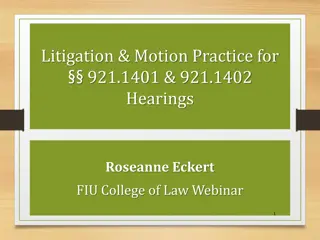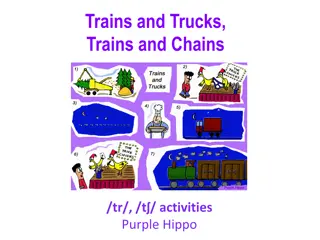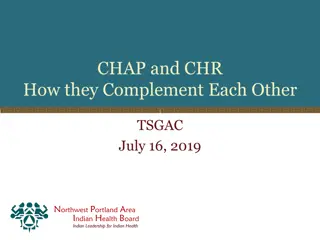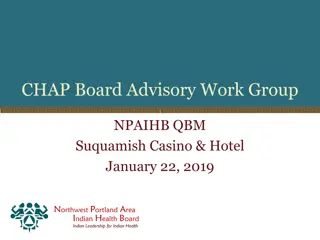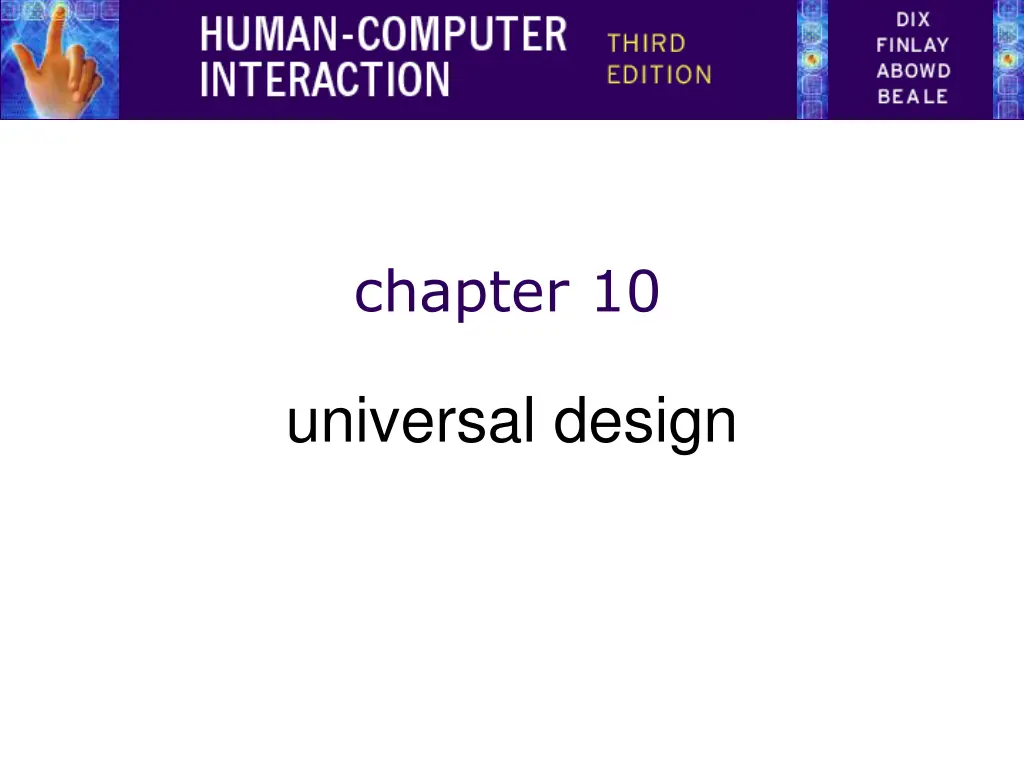
Universal Design Principles and Multi-Sensory Systems in Interaction
Explore the concepts of universal design principles, multi-sensory systems, usable senses, multi-modal vs. multi-media, speech structures, and more. Learn how these elements influence design for equitable use and user experience, catering to a diverse range of needs and preferences.
Download Presentation

Please find below an Image/Link to download the presentation.
The content on the website is provided AS IS for your information and personal use only. It may not be sold, licensed, or shared on other websites without obtaining consent from the author. If you encounter any issues during the download, it is possible that the publisher has removed the file from their server.
You are allowed to download the files provided on this website for personal or commercial use, subject to the condition that they are used lawfully. All files are the property of their respective owners.
The content on the website is provided AS IS for your information and personal use only. It may not be sold, licensed, or shared on other websites without obtaining consent from the author.
E N D
Presentation Transcript
chapter 10 universal design
universal design principles - NCSW equitable use flexibility in use simple and intuitive to use perceptible information tolerance for error low physical effort size and space for approach and use
Multi-Sensory Systems More than one sensory channel in interaction e.g. sounds, text, hypertext, animation, video, gestures, vision Used in a range of applications: particularly good for users with special needs, and virtual reality Will cover general terminology speech non-speech sounds handwriting considering applications as well as principles
Usable Senses The 5 senses (sight, sound, touch, taste and smell) are used by us every day each is important on its own together, they provide a fuller interaction with the natural world Computers rarely offer such a rich interaction Can we use all the available senses? ideally, yes practically no We can use sight sound touch (sometimes) We cannot (yet) use taste smell
Multi-modal vs. Multi-media Multi-modal systems use more than one sense (or mode ) of interaction e.g. visual and aural senses: a text processor may speak the words as well as echoing them to the screen Multi-media systems use a number of different media to communicate information e.g. a computer-based teaching system:may use video, animation, text and still images: different media all using the visual mode of interaction; may also use sounds, both speech and non-speech: two more media, now using a different mode
Speech Human beings have a great and natural mastery of speech makes it difficult to appreciate the complexities but it s an easy medium for communication
Structure of Speech phonemes 40 of them basic atomic units sound slightly different depending on the context they are in, these larger units are allophones all the sounds in the language between 120 and 130 of them these are formed into morphemes smallest unit of language that has meaning.
Speech (contd) Other terminology: prosody alteration in tone and quality variations in emphasis, stress, pauses and pitch impart more meaning to sentences. co-articulation the effect of context on the sound transforms the phonemes into allophones syntax structure of sentences semantics meaning of sentences
Speech Recognition Problems Different people speak differently: accent, intonation, stress, idiom, volume, etc. The syntax of semantically similar sentences may vary. Background noises can interfere. People often ummm..... and errr..... Words not enough - semantics needed as well requires intelligence to understand a sentence context of the utterance often has to be known also information about the subject and speaker e.g. even if Errr.... I, um, don t like this is recognised, it is a fairly useless piece of information on it s own
The Phonetic Typewriter Developed for Finnish (a phonetic language, written as it is said) Trained on one speaker, will generalise to others. A neural network is trained to cluster together similar sounds, which are then labelled with the corresponding character. When recognising speech, the sounds uttered are allocated to the closest corresponding output, and the character for that output is printed. requires large dictionary of minor variations to correct general mechanism noticeably poorer performance on speakers it has not been trained on
The Phonetic Typewriter (ctd) a a a ah h e e e o a a h r l y y j i o o a h r r r g g y j i o o m a r m n m n j i i l o u h v vm n n h hj j j l u v v p d d t r h hi j . . u v tk k p p p r k s . . v k pt t p t p h s s
Speech Recognition: useful? Single user or limited vocabulary systems e.g. computer dictation Open use, limited vocabulary systems can work satisfactorily e.g. some voice activated telephone systems general user, wide vocabulary systems still a problem Great potential, however when users hands are already occupied e.g. driving, manufacturing for users with physical disabilities lightweight, mobile devices
Speech Synthesis The generation of speech Useful natural and familiar way of receiving information Problems similar to recognition: prosody particularly Additional problems intrusive - needs headphones, or creates noise in the workplace transient - harder to review and browse
Speech Synthesis: useful? Successful in certain constrained applications when the user: is particularly motivated to overcome problems has few alternatives Examples: screen readers read the textual display to the user utilised by visually impaired people warning signals spoken information sometimes presented to pilots whose visual and haptic skills are already fully occupied
Non-Speech Sounds boings, bangs, squeaks, clicks etc. commonly used for warnings and alarms Evidence to show they are useful fewer typing mistakes with key clicks video games harder without sound Language/culture independent, unlike speech
Non-Speech Sounds: useful? Dual mode displays: information presented along two different sensory channels redundant presentation of information resolution of ambiguity in one mode through information in another Sound good for transient information background status information e.g. Sound can be used as a redundant mode in the Apple Macintosh; almost any user action (file selection, window active, disk insert, search error, copy complete, etc.) can have a different sound associated with it.
Auditory Icons Use natural sounds to represent different types of object or action Natural sounds have associated semantics which can be mapped onto similar meanings in the interaction e.g. throwing something away ~ the sound of smashing glass Problem: not all things have associated meanings Additional information can also be presented: muffled sounds if object is obscured or action is in the background use of stereo allows positional information to be added
SonicFinder for the Macintosh items and actions on the desktop have associated sounds folders have a papery noise moving files dragging sound copying a problem sound of a liquid being poured into a receptacle rising pitch indicates the progress of the copy big files have louder sound than smaller ones
Earcons Synthetic sounds used to convey information Structured combinations of notes (motives ) represent actions and objects Motives combined to provide rich information compound earcons multiple motives combined to make one more complicated earcon
Earcons (ctd) family earcons similar types of earcons represent similar classes of action or similar objects: the family of errors would contain syntax and operating system errors Earcons easily grouped and refined due to compositional and hierarchical nature Harder to associate with the interface task since there is no natural mapping
touch haptic interaction cutaneous perception tactile sensation; vibrations on the skin kinesthetics movement and position; force feedback information on shape, texture, resistance, temperature, comparative spatial factors example technologies electronic braille displays force feedback devices e.g. Phantom resistance, texture
Handwriting recognition Handwriting is another communication mechanism which we are used to in day-to-day life Technology Handwriting consists of complex strokes and spaces Captured by digitising tablet strokes transformed to sequence of dots large tablets available suitable for digitising maps and technical drawings smaller devices, some incorporating thin screens to display the information PDAs such as Palm Pilot tablet PCs
Handwriting recognition (ctd) Problems personal differences in letter formation co-articulation effects Breakthroughs: stroke not just bitmap special alphabet Graffeti on PalmOS Current state: usable even without training but many prefer keyboards!
gesture applications gestural input - e.g. put that there sign language technology data glove position sensing devices e.g MIT Media Room benefits natural form of interaction - pointing enhance communication between signing and non- signing users problems user dependent, variable and issues of coarticulation
Users with disabilities visual impairment screen readers, SonicFinder hearing impairment text communication, gesture, captions physical impairment speech I/O, eyegaze, gesture, predictive systems (e.g. Reactive keyboard) speech impairment speech synthesis, text communication dyslexia speech input, output autism communication, education
plus age groups older people e.g. disability aids, memory aids, communication tools to prevent social isolation children e.g. appropriate input/output devices, involvement in design process cultural differences influence of nationality, generation, gender, race, sexuality, class, religion, political persuasion etc. on interpretation of interface features e.g. interpretation and acceptability of language, cultural symbols, gesture and colour

